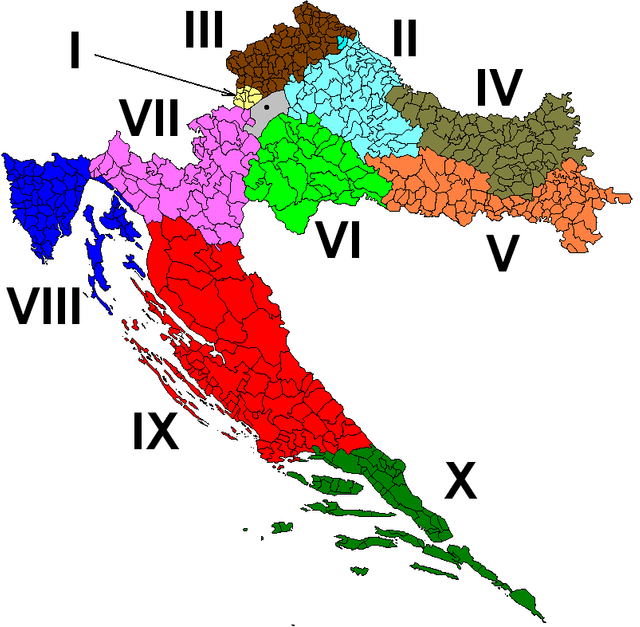
I'm starting new article series on this blog, dedicated to the current news in Croatia, namely related to July 5th parliamentary elections.
The election to take place in Croatia is the tenth election since introduction of multi-party democracy in 1990. Croatian voters are to elect 151 members of Parliament – 140 in 10 electoral district (based on proportional vote), 3 in special district for Croatian diaspora (also proportional votes) and 8 in seats reserved for ethnic minorities (including 3 Serbs).
Current Parliament was to have its term expire in September, but the government of prime minister Andrej Plenković scheduled them early, hoping to capitalise on successful handling of COVID-19 crisis and, which is even more important, trying to postpone effects of catastrophic tourist season on general Croatian economy becoming too obvious to the voters. Following elections in neighbouring Serbia on June 21st (which governing party of Aleksandar Vučić won handily) and first round of presidential elections in Poland, elections in Croatia should give some insight how voters in general react to COVID-19 and resulting economic and social woes.
At the start of campaign only three parties were certain to enter new Parliament. Ruling right wing Croatian Democratic Union (HDZ) led by prime minister Andrej Plenković; centre-left Restart coalition led by Social Democratic Party (SDP) and far right Homeland Movement led by popular singer and former HDZ stalwart Miroslav Škoro who almost managed to enter second round of presidential elections few months ago, ultimately won by SDP candidate Zoran Milanović. Today, it is reasonably to expect right-wing MOST party to win few seats, as well as left wing We Can (Možemo) coalition and, possibly, anti-establishment populist bloc Enough of Plunder gathered around Human Blockade party.
Opinion polls in Croatia are generally not very reliable, since they are usually made only on national level instead of individual districts, often missing local details – like regionalist Istrian Democratic Assembly winning seats in VIII Electoral District, despite having barely 1% in entire Croatia – and ignoring various ad hoc party blocs and coalitions created in order to make over 5% threshold necessary to participate in seat distribution according to d'Hondt method of proportional represantion.
The poll which is supposed to be the most reliable was conducted by national television and, unlike other polls, was made in individual districts. It should allow more precise calculation for party mandates and even give some hints for voters who prefer tactical voting over voting their conscience.
Projections based on the poll are these:
First Electoral District (central section of City of Zagreb)
Restart – 29.20 % (6 seats); HDZ – 19.70 % (4 seats); Homeland Movement – 10.40 % (2 seats); We Can – 9.10 % (1 seat); MOST – 6.10 % (1 seat)
Second Electoral District (souther section of Zagreb and southern section of Northern Croatia)
Restart – 31.00 % (6 seats); HDZ – 28.00 % (6 seats); Homeland Movement – 11.30 % (2 seats)
Third Electoral District (northern section of Northern Croatia)
Restart – 41.80 % (9 seats); HDZ – 22.40 % (5 seats)
Fourth Electoral District (Northern Slavonia)
HDZ – 32.40 % (6 seats); Homeland Movement – 22.20 % (4 seats); Restart – 18.70 % (4 seats)
Fifth Electoral District (Southern Slavonia)
HDZ – 41.20 % (7 seats); Restart – 20.80 % (4 seats); Homeland Movement – 16.80 % (3 seats)
Sixth Electoral District (southern section of Zagreb and east section of Central Croatia)
Restart – 29.40 % (6 seats); HDZ – 24.40 % (5 seats); Homeland Movement – 11.70 % (2 seats); MOST – 5.70 % (1 seat)
Seventh Electoral District (western part of Zagreb, west section of Central Croatia, Gorski Kotar and Northern Lika)
Restart – 28.60 % (6 seats); HDZ – 26.40 % (6 seats); Homeland Movement – 11.00 % (2 seats)
Eighth Electoral District (Istria, Gorski Kotar and Littoral Croatia)
Restart – 47.20 % (10 seats); HDZ – 19.70 % (4 seats)
Ninth Electoral District (Lika and northern section of Dalmatia)
HDZ - 37.10 % (7 seats); Restart – 20.20 % (3 seats); Homeland Movement – 10.20 % (2 seats); MOST – 9.10 % (1 seats); Enough of Plunder – 6.10 % (1 seat)
Tenth Electoral District (southern section of Dalmatia)
HDZ – 33.00 % (7 seats); Restart – 26.20 % (5 seats); Homeland Movement – 8.50 % ( 1 seat); MOST – 8.30 % (1 seat)
All three diaspora seats are expected to be taken by HDZ or Homeland Movement. Three Serb seats are going to be taken by Independent Democratic Serb Party led by Milorad Pupovac, while other five are likely to be taken by independent or ethnic party candidates.
According to the poll, it appears that HDZ will win total of 57 seats in Croatia and 2-3 in diasapora. Restart will get 59 seats, Homeland Movement will get 18 seats. MOST will get 4 seats. We Can and Enough of Plunder will get 1 seat each.
HDZ and Restart will need 76 seats for governing majority, and they aren't likely to get it without coalition with other parties. A lot would depend about actual numbers of seats won in each district and which of the parties will or won't push through the threshold.